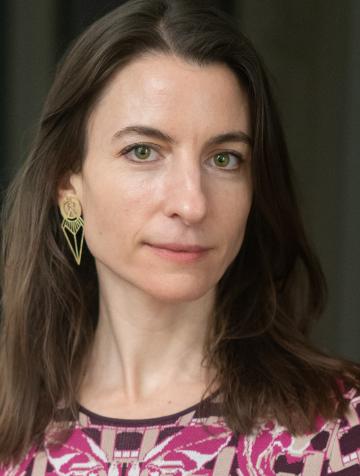Shira Brisman is a historian of early modern art. Much of her research centers around the role that art plays in the formation of communities. This interest guides her focus on the history of printed images and texts around the time of the Protestant Reformation, the relationship of intimacy and concealment to publicity, the interconnection of art and law, and the entanglement of the visual world with histories of violence and public shaming. Her first book, Albrecht Dürer and the Epistolary Mode of Address (University of Chicago Press in 2016), argues that the experience of writing, sending and receiving letters shaped how Germany’s most famous printmaker conceived of the message-bearing properties of the work of art. Departing from traditional art historical methods of reading letters for biographical information, the book considers early modern letters as agents of communication that provide a set of analogies to how certain visual images address their audiences. Its chapters draw upon a range of materials: messenger badges, courier logs, and letters about lost letters.
Building on her first book’s ethical concern with how images and artifacts participate in the creation of social bonds across the early modern world, Brisman is currently at work on a new project, The Goldsmith’s Debt: Material and Intellectual Property at the Turn of the Seventeenth Century. Centering on the career of the Nuremberg goldsmith-engraver Christoph Jamnitzer (1563-1618), the book provides analyses of two interrelated media—gilded silver vessels and printed proposals of designs for such wares—to uncover how the transmission of artistic ideas, craft skill, and ‘movable’ containers made of precious metal was rooted in analogies to the inheritance of land.
In her courses, offered through the History of Art department and the program in Visual Studies, Brisman explores with her students such themes as print culture, the idea of authorship, the intersecting histories of science and art, the making and breaking of laws about creative production, and Art History’s relationship to language, literature, and primary source texts.
Prior to her arrival at Penn, she taught as Andrew W. Mellon Lecturer and Postdoctoral Fellow at Columbia University and at the University of Wisconsin-Madison. Her research has been supported by fellowships from the American Council of Learned Societies; the American Philosophical Society; the Center for Advanced Study in the Visual Arts; the Albrecht Dürer Scholarship at the Germanisches Nationalmuseum; and the Samuel H. Kress Foundation Fellowship in the Literature of Art at the Clark Art Institute. For the academic year 2020-21, she holds a Penn Faculty Fellow at the Wolf Humanities Center, focusing on the topic of “Choice.”
Brisman received her B.A. (2001), M.A. (2008), and PhD (2012) from Yale University.
Book:
Albrecht Dürer and the Epistolary Mode of Address (University of Chicago Press, 2016).
Articles:
“Maerten van Heemskerck’s Momus and the Moment of Critique,” RES: Anthropology and Aesthetics 73/74 (2020): 23-40.
“Image / Vessel / Waste,” Grey Room 80 (Summer 2020): 68-97.
“Christoph Jamnitzer’s Speechless Defense of the Goldsmith’s Strengths,” Zeitschrift für Kunstgeschichte 83.3 (2020): 385-408.
“Against the Quieted Violence of Sixteenth-Century Art,” Sixteenth-Century Journal Volume L No. 1 (Spring 2019), 118-127.
“A Matter of Choice: Printed Design Proposals and the Nature of Selection, 1490-1610” Renaissance Quarterly 71 (2018): 114-164.
“Symmetry’s Generative Side,” RES: Anthropology and Aesthetics 67/68 (2016/ 2017): 1-19.
“The Unassembled Grammar of the Drawing in the Era of Reform,” Art History, edited by Bridget Heal and Joseph Leo Koerner 40.2 (April 2017): 312-335.
“Relay and Delay: Dürer’s Triumphal Chariots in the Era of the Post,” Art History 39.3 (June 2016): 437-465.
“Sternkraut: ‘The Word that Unlocks’ Dürer’s Self Portrait of 1493” in The Early Dürer, ed. Thomas Eser and Daniel Hess (Thames & Hudson; Nuremberg: Germanisches Nationalmuseum, 2012), 194-207.

